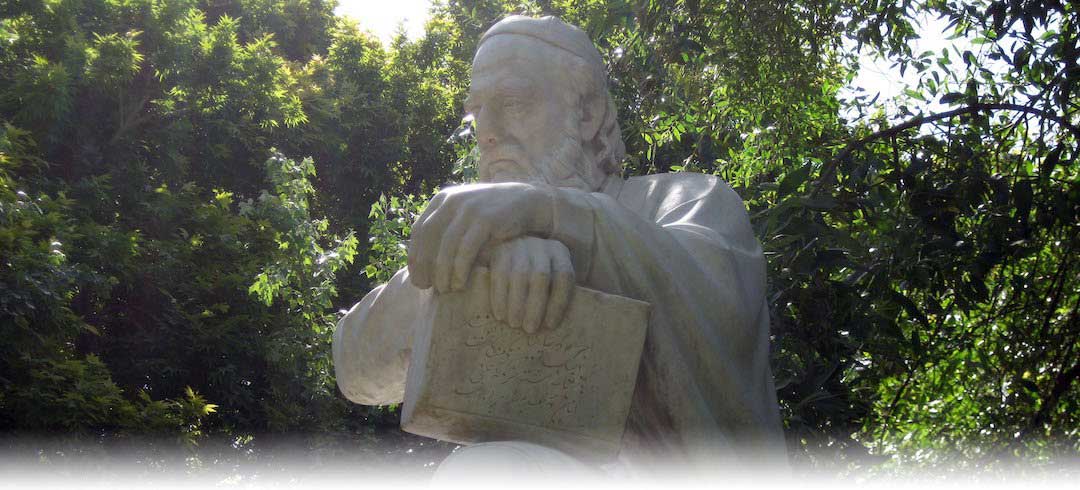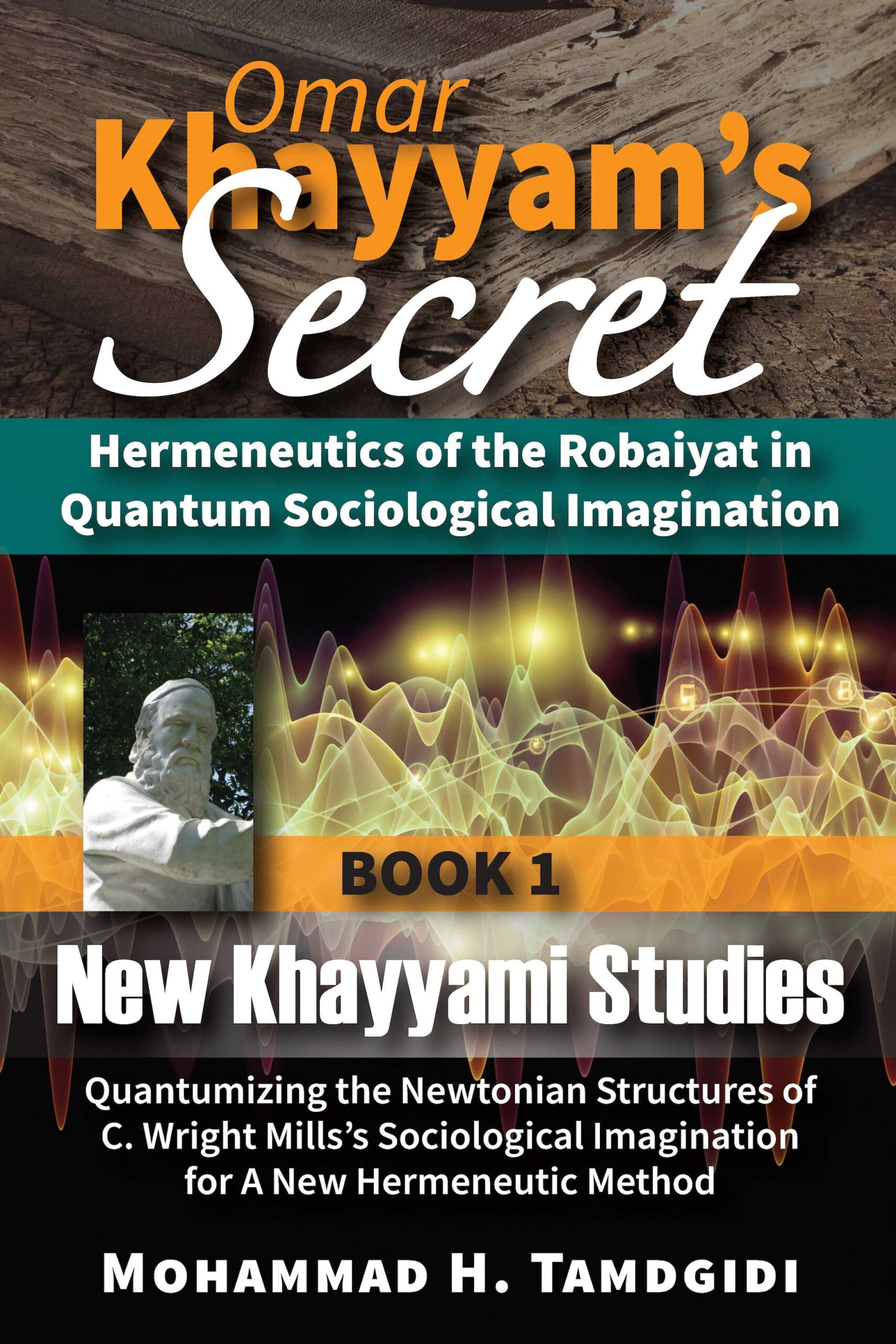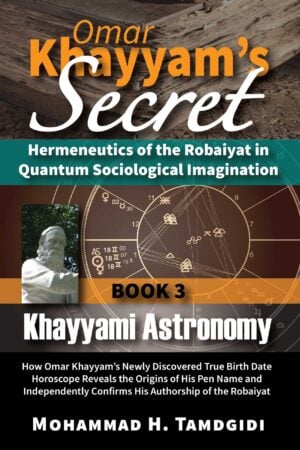Book Section: CHAPTER IV — Hermeneutics of the Khayyami Robaiyat in Quantum Sociological Imagination: Source Availability and Matters of Secrecy — by Mohammad H. Tamdgidi
$20.00
This essay, titled “Hermeneutics of the Khayyami Robaiyat in Quantum Sociological Imagination: Source Availability and Secrecy,” is the fourth and last chapter of the first book, subtitled New Khayyami Studies: Quantumizing the Newtonian Structures of C. Wright Mills’s Sociological Imagination for A New Hermeneutic Method, of the twelve-book series, Omar Khayyam’s Secret: Hermeneutics of the Robaiyat in Quantum Sociological Imagination, authored by Mohammad H. Tamdgidi.
Description
Abstract
This essay, titled “Hermeneutics of the Khayyami Robaiyat in Quantum Sociological Imagination: Source Availability and Secrecy,” is the fourth and last chapter of the first book, subtitled New Khayyami Studies: Quantumizing the Newtonian Structures of C. Wright Mills’s Sociological Imagination for A New Hermeneutic Method, of the twelve-book series, Omar Khayyam’s Secret: Hermeneutics of the Robaiyat in Quantum Sociological Imagination, authored by Mohammad H. Tamdgidi. Relaxing his prior assumptions and abstractions from matters of source availability and secrecy as maintained in the previous three chapters of the book, Tamdgidi tries in this chapter to elaborate in more detail on both of the above challenges confronting Khayyami studies.
In the first section, his purpose is to draw a preliminary, basic outline of the sources of information available (or not) for the research on Khayyam conducted for this series. His aim here is not to delve into the historical, bibliographic, or manuscript conditions or the extent of authenticity of these sources. Those details will be carefully introduced, examined, and evaluated during the substantive explorations of this series in conjunction with careful studies of their contents.
Tamdgidi then offers a categorization of sources available for Khayyami studies broadly as follows.
1. Primary Sources: texts that are attributed, unanimously or not, to Omar Khayyam himself. In this category, he identifies the following subcategories: A) As a first subcategory of primary sources, we should include works that Khayyam may have written, intended to be shared or not during his own lifetime, of which we do not yet have any knowledge or records whatever; B) As a second subcategory of primary sources, we have works specifically reported by Khayyam (as acknowledges also by others) to have been written by him on definite topics from which we do not (yet) have any complete or even partial manuscripts. C) A third subcategory of primary sources are surviving works bearing Khayyam’s name that are universally accepted to have been authored by him, these include a variety of sources that Tamdgidi lists in the section; D) The Khayyami Robaiyat: A fourth subcategory of surviving primary sources are the Robaiyat (quatrains) written in Persian that have been attributed to Omar Khayyam in various manuscripts down the centuries; it is given a separate subcategory given the disputed nature of their attribution. 2. Secondary Sources: old accounts and information about Khayyam’s life and works from the pre-FitzGeraldian era, among which the author identifies also four subcategories as explained in the text. 3. Tertiary Sources: include all the modern and recent sources written about Khayyam’s life and works in the post-FitzGeraldian era. Tamdgidi notes further that fourth (possible architecture related works) and fifth (burial related material) categories can also be considered as sources in Khayyami studies.
In the author’s view, the most reliable strategy for conducting Khayyami studies must be one that lays the most emphasis on the primary material as the source of the most reliable information about Khayyam. However, in his view, we will have to avoid treating all the various categories and subcategories as chunky, separate billiard balls to be struck with one another from without, but will approach them in their overlapping and superposed nature, in such a way that despite their apparently fragmented state, they are imagined as being superposed expressions of a life in progress, works produced along a lifetime, and commentaries made by others on his life and works amid a wider world-history context they all share.
Tamdgidi then elaborates on his hermeneutic method to be used in the series, noting that he will be particularly interested and careful to seek, as far as possible, the symbolic meanings amid the language Khayyam himself uses from his own texts as part of the landscape of his own subjective universe, rather than assuming in an a priori fashion that simply because Khayyam admired Avicenna (or anyone else for that matter) he retained and applied the same meaning in the same way as Avicenna or others did in their work.
Finally, while offering the broad contours and a gist of his thesis advanced in the series, Tamdgidi encourages his readers to consider and understand that his presentation method of revealing the “secret” of Khayyam in the series has to remain respectful of Khayyam’s style of teaching and writing, since understanding of that process is itself an integral part of the “secret” Khayyam wished to impart through his works, particularly his Robaiyat.
Recommended Citation
Tamdgidi, Mohammad H. 2021. “CHAPTER IV — Hermeneutics of the Khayyami Robaiyat in Quantum Sociological Imagination: Source Availability and Matters of Secrecy.” Pp. 177-213 in Omar Khayyam’s Secret: Hermeneutics of the Robaiyat in Quantum Sociological Imagination: Book 1: New Khayyami Studies: Quantumizing the Newtonian Structures of C. Wright Mills’s Sociological Imagination for A New Hermeneutic Method. (Human Architecture: Journal of the Sociology of Self-Knowledge: Vol. XIV, 2021. Tayyebeh Series in East-West Research and Translation.) Belmont, MA: Okcir Press.
Where to Purchase Complete Book: The various editions of the volume of which this Book Section is a part can be ordered from the Okcir Store and all major online bookstores worldwide (such as Amazon, Barnes&Noble, Google Play, and others).
Read the Above Publication Online
To read the above publication online, you need to be logged in as an OKCIR Library member with a valid access. In that case just click on the large PDF icon below to access the publication. Make sure you refresh your browser page after logging in.








